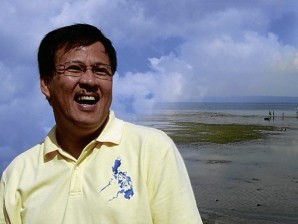
It was with bated breath that we waited for Jesse Robredo of Naga City, one of the ablest local officials this country ever had, to be sworn in as secretary of the interior and local government. His name had been one of the first to be mentioned for a Cabinet post. And then everybody was sworn in except him.
Former Makati Mayor Jejomar Binay, now the Vice President, had coveted the post and made no effort to conceal his desire. But President Aquino did not have even half a mind to hand it to him. It was Robredo’s, or so we thought. And then, the wait.
Finally Robredo was handed the DILG post and he accepted. What a relief.
Robredo was the 2000 Ramon Magsaysay awardee for government service. He was 42 at the time and had been mayor of Naga City for nearly 10 years. I had the privilege of being assigned to write about him.
Robredo shared “the story of a small, faceless but inspired community which got better by continuously trying to better itself.” When he took over in 1988, Naga was “in bad shape” economically, service delivery was bad and political patronage was the order of the day.
Communications strategy
Mere words wouldn’t have worked with a cynical citizenry. But leadership in action proved irresistible and couldn’t be ignored. Still a little creativity went a long way to make people “hit the ground running.” Symbols and slogans were among the secret ingredients.
Robredo offered his constituents a dream they could visualize and aim for—a place where they could live happily. “Ang Maogmang Lugar” (The Happy Place) became the description for the Naga of their dreams, fortified the slogans “Kauswagan kan Naga, kung bako ngonian, nuarin pa?” (Progress for Naga, if not now, when?). And the busy ant, which does not work alone but in community, became the mascot. This Robredo called his “communications strategy.”
Robredo said “participative visioning” was the key. This involved three essential elements: A core development perspective, a mechanism for updating the corporate vision/mission from time to time, and a strategy for communicating that vision. But before all these, he said, one had to do “environmental scanning” in order to know what Naga and its people was all about.
Robredo, who had a degree in mechanical and industrial engineering from De La Salle University and an MBA from the University of the Philippines, was an executive at San Miguel Corp. in Manila when then President Corazon Aquino called on young people to help build people power at the grass-roots level. He heeded the call, packed his bags, and headed home. He was 32.
Robredo used corporate jargon to describe his strategies but more than that, he was a hands-on leader in touch with nongovernment and people’s organizations in the grass roots.
Growth with equity
Said France Clavecilla, a community organizing veteran who had worked in Naga: “He delivered fast. Housing for the poor was among his priorities.”
“Growth with equity” was at the core of the Robredo administration’s philosophy. It meant that every resident of Naga was a partner and a beneficiary in the city’s development.
“Given the circumstances,” he said in 2000, “almost no one believed us when we said that Naga would reclaim its reputation as the premier city of Bicol before the end of my first term in 1992, more so when we envisioned Naga establishing its niche as one of the best managed local governments in the country.”
But first, Robredo said, there had to be confidence building. There had to be confidence in the leadership, the bureaucracy and the citizenry as a whole. “Leadership must be bold and inspiring, energizing, enabling and ennobling.” To demonstrate that kind of leadership, Robredo curbed illegal gambling, corruption, prostitution and drugs. “Our message was: Your government not only works, it always does things better.” Toward that goal, he put in long work hours.
The bureaucracy at City Hall got the message: This guy meant business and they must do the same. “Everyone was given the opportunity to prove his worth,” Robredo said, “but it also became clear to everyone that a no-nonsense leadership was at the helm.” Soon the efforts paid off.
Inclusive empowerment
But the constituency had to be included. “The leadership must not only be empowering, it must be inclusive,” Robredo stressed. “It is precisely for this reason that very early on, we reached out to the city’s NGO-PO community instead of simply confining deliberation within a group of elected officials.”
“The Empowerment Ordinance of Naga City” was a landmark and revolutionary legislation that forged a partnership between the city government and the people of Naga. The ordinance created the Naga City People’s Council, where people’s representatives participated and voted in deliberations and even proposed legislation.
By then, Naga City had garnered a string of international and national awards, among them the plum Ramon Magsaysay award, which Robredo said was the Nagueños rightfully deserved. The only award, Naga had not won, Robredo said in jest, was the one from Clean and Green.
Stint at Harvard
Robredo did not stop learning. After his term ended in 1998, he attended the John F. Kennedy School of Government at Harvard University.
After three terms or almost 10 years as mayor, Robredo left government service even though he could have run for another public office. He said it was important that he spent more time with his wife and children.
But in no time, Robredo was back at the helm, and served for nine more years. And the rest is Naga history.
Now he is on the short list of the World Mayor Prize.
Send feedback to cerespdgmail.com or www.ceresdoyo.com
Philippine Daily Inquirer
July 15, 2010, issue